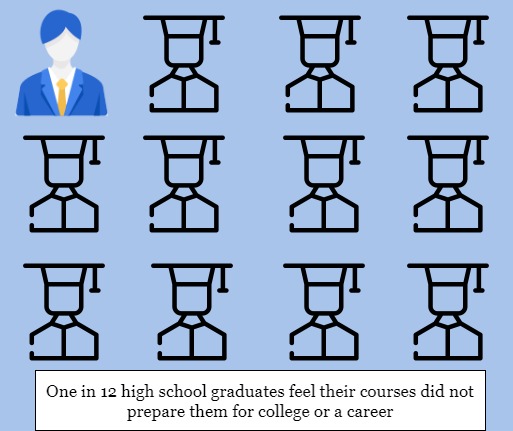Why Art Education in High School isn’t Necessary

May 30, 2018
Art classes. They can be fun, intriguing, boring, even confusing. Arts classes can be described by many adjective but necessary is not one of them. I take no issue with the fact that the classes are offered, and even take a number myself, and I am not even advocating for their removal. However, they are not necessary to the success of students.
One of the biggest argument for art education is that it results in better test scores and higher grades. The simple fact that this is the best point art-education advocates can make is very telling. If the classes are considered essential due to their positive impact on grades, then perhaps that time spent on art should just be allocated to other courses or more free time that allow students to manage their workload in a better way. Evidence that links art education to academic success is limited, and is a prime example of the difference between causation and correlation. While it is true that students who take art classes generally have higher GPAs, that is not proof that art classes are the cause of that difference. This sentiment is echoed by Ellen Winner, a who is part of an arts education program at Harvard. Winner states that “when kids take a lot of art [classes], they don’t improve in their core subject areas,”. The success can be attributed to a number of factors, such as the fact that students with lower GPAs may not be at liberty to take more art classes.
In Glen Rock High School, a student is required to take a certain number of art classes, which can be taking valuable time away from other, more enriching courses, or option time which can be extremely beneficial to those taking a high number of AP or Honors courses. Why should students who are disinterested in the arts be forced to take an art course simply so they can acquire the credits? This takes nothing away from those students that have a genuine interest in the arts, but I believe that students, especially those who are involved with extracurriculars such as sports and clubs, would benefit exponentially from more time to get their work done.
In 2010, a Sacramento school system passed a bill that replaced art in schools with career training programs for students. STEM programs and other courses relating to preparing students for the ‘real world’ are likely more useful than art classes. Once again, this is not to say that art classes should be eliminated, rather change the way we look at them and their significance.
We must remember what is actually necessary in education, which is to prepare them for success and prosperity in the next step of their lives. A study released by the Education Trust found that only 8 percent of recent graduates have taken a “foundational set of courses they’d need to be both college- and career-ready.” In addition, it is not to say that money is everything, but it is worth noting that most of the top earners in the liberal arts end up matching only the bottom earners in the STEM fields.
None of this piece is meant to belittle the arts or those who have passion for them. However, schools across America should realize that art education is unnecessary.


